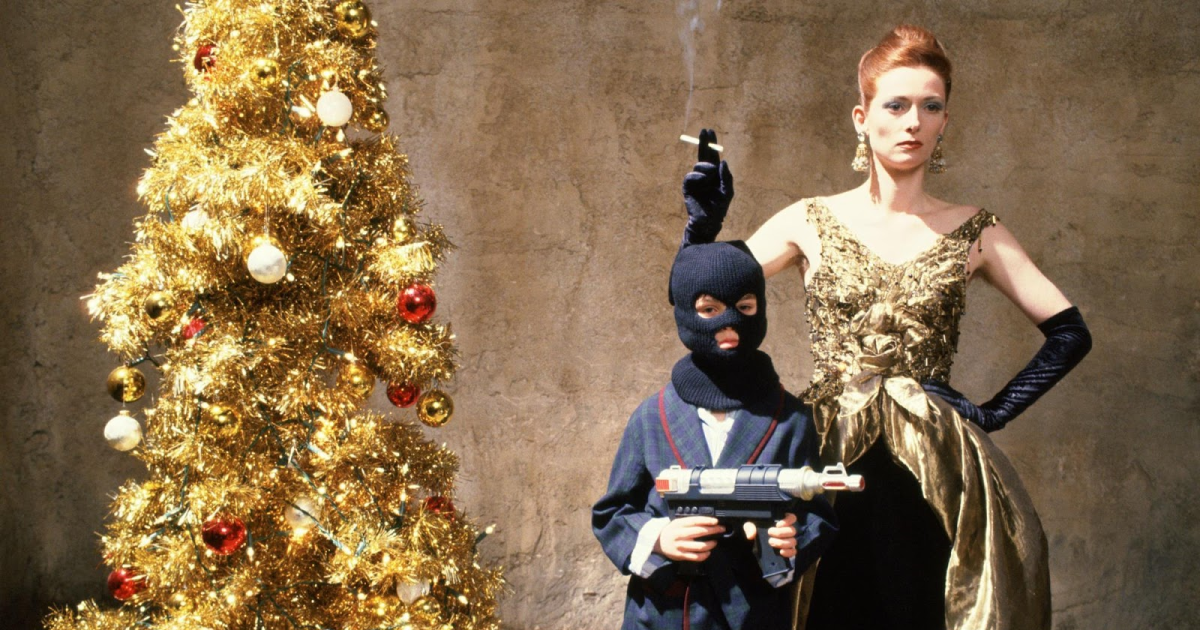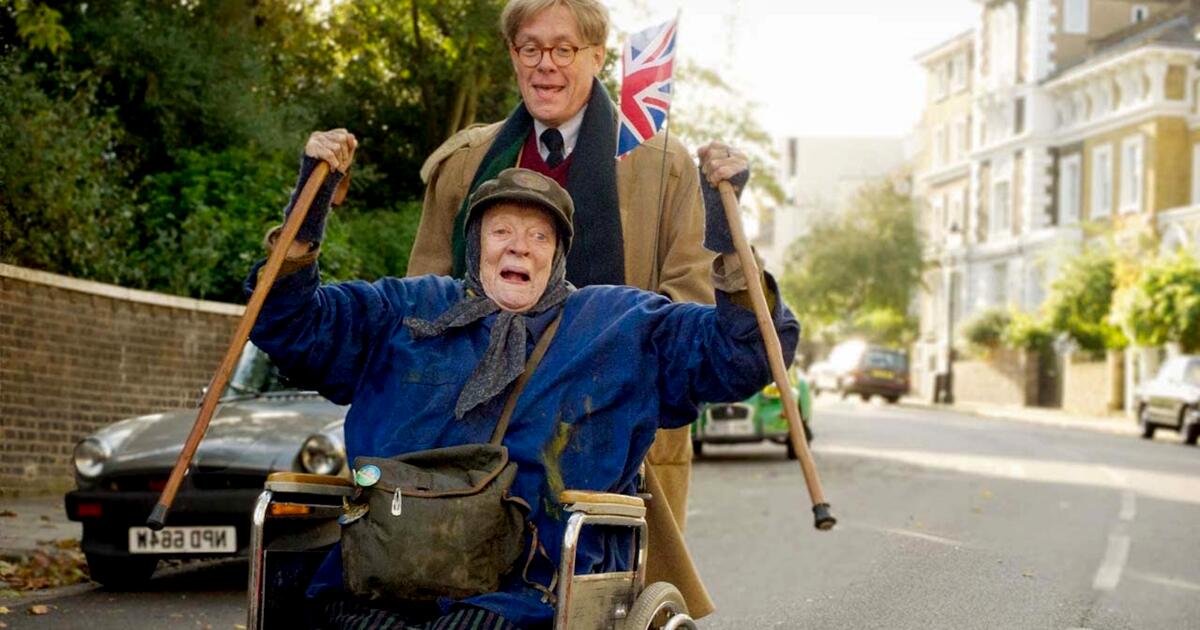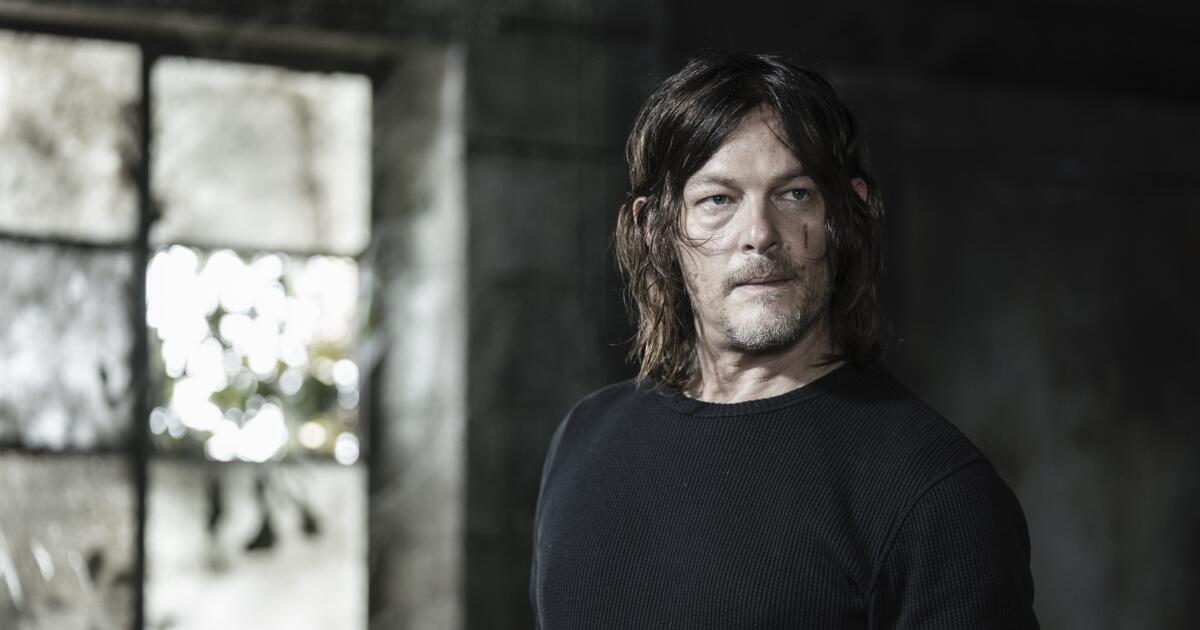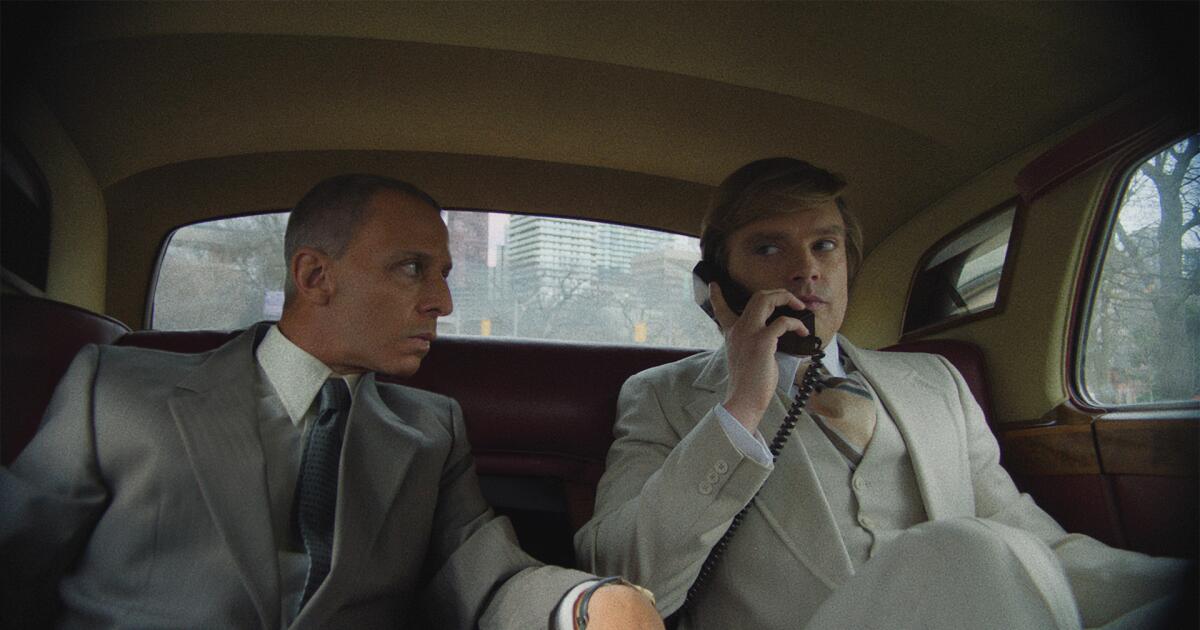The early 1990s saw an explosion of gay and lesbian films that challenged convention. They mixed postmodern sensibilities with contemporary anxieties about everything from the AIDS epidemic to rampant homophobia. Furthermore, they refracted those concerns through a visual language that borrowed gleefully from the avant-garde and video art but turned out to be surprisingly marketable.
They were hard movies to label and even harder to ignore. For film critic and scholar B. Ruby Rich, that crop of films represented a period of cinema unlike any before, and perhaps since.
“It marked a moment when filmmakers, at any risk, were willing to make films that galvanized people's attention on injustice and death,” Rich, 76, tells the Times via Zoom from Paris. “And that's why they still have power.”
Rich called it New Queer Cinema, a term that is stagnant. Those films will be celebrated in an upcoming series at the Academy Museum of Motion Picture Arts and Sciences, “Full of Pleasure: The Beginnings of the New Queer Cinema.”
Guinevere Turner, left, and Cheryl Dunye in the 1996 romantic comedy “The Watermelon Woman.”
(Academy Museum)
The show, which begins June 15, will screen titles such as Derek Jarman's melancholic true drama “Edward II,” Todd Haynes' controversial feature debut “Poison” and Cheryl Dunye's groundbreaking “The Watermelon Woman,” films and filmmakers that marked the beginning of a turning point in independent cinema by and for the LGBTQ community.
Gay directors were producing exciting, innovative work that was taking the festival circuit by storm. Unified by neither approach nor aesthetic, Rich identified them rather as embodiments of a common style. “Call him 'Homo Pomo,'” he wrote in 1992.
No sooner had the Village Voice published Rich's ambitious overview of this budding canon than the British film magazine Sight and Sound reprinted it and used it as the cornerstone of a lecture at London's Institute of Contemporary Art. Shortly after, Channel 4 in the United Kingdom did a special on it.
“Then distributors and theaters picked it up,” Rich recalls. “And it became a way to promote films that were part of this energy that I had named. It turned out that it had this radioactive half-life and it kept working, which is very nice.” (As for her own fame for contributing to the lexicon, she is self-deprecating: “Then I discovered something as a writer: if you write a book that is useful for marketing, you can live forever.”)

Keanu Reeves and River Phoenix in Gus Van Sant's 1991 drama “My Own Private Idaho.”
(Academy Museum)
Rich remembers the time well. Living in New York City, I watched academics wrestle with the term “queer,” then still a derogatory term, in conferences and classrooms, as protest groups like ACT UP, the AIDS Coalition to Unleash Power, and Queer Nation reclaimed the word. how they papered the streets in response to the government's inaction in the face of the AIDS epidemic.
“This word had these two dimensions that were perfect for me,” Rich says. “It was about developing this thing called 'queer theory' and what it would mean, what it's based on, and what it might illuminate. But around the same time, it became “We're here, we're faggots!” Get used to it!' It became a kind of call for activists.”
As I contemplated the ironic erotic work of Gus Van Sant, the poetic and urgent sensibility of Isaac Julien, the anarchic energy of Gregg Araki, the sharp satire of Cheryl Dunye's videos at festivals such as Sundance and Lincoln Center's New Directors/New Films, Rich felt encouraged to coin a phrase that remains as provocative now as it was revealing then.
“If the movies hadn't been so important, if the filmmakers hadn't kept working and if they hadn't been joined by other wonderful filmmakers, I think this would have faded away,” Rich adds.
The explosion of cinema that Rich described was unprecedented.
“At that time you couldn't go to the cinema and watch gay movies,” he says. “Apart from Fassbinder, there were very few. They had to be subtitled or they couldn't be seen. And this changed that forever. It changed it so much that it became common and nothing special and I'll just wait until it's on Netflix or whatever. But I think the fact that you had gay movies, gay sex, lesbian romance, all of that on big screens in your multiplex, was absolutely earth-shattering for people at the time.”

An image from Jennie Livingston's 1990 documentary “Paris Is Burning.”
(Academy Museum)
The new queer cinema was in fashion. It was of and for the moment. In January 1991 at Sundance, Haynes's “Poison,” a sci-fi horror triptych inspired by the novels of Jean Genet, and director Jennie Livingston's “Paris Is Burning,” a documentary about dance culture in the New York City, took top honors. of their juries. A few months later, Van Sant's road-trip drama about a street hustler, “My Own Private Idaho,” exited the 1991 Venice International Film Festival to stellar reviews and a best actor award for the incandescent River Phoenix.
Striking a chord with critics and audiences alike (Van Sant's film grossed $8 million, Livingston's documentary $3.7 million), these films remain urgent and timely, as demonstrated by the Museum of Art series. Academy.
Part of that has to do with how the straight-up cinema of the early 1990s can still impact. The films embraced pastiche, appropriation and irony. In doing so, they created exciting new ways to tell gay and lesbian stories. And he did so by abrasively rejecting the sharp boundaries of identity politics. Simply calling them “gay movies” would have been insufficient. As Rich wrote at the time, these films were “irreverent, energetic, alternately minimalist and excessive. Above all, they are full of pleasure. They’re here, they’re queers, catch up with them.”
It is those same lines that give the title to the series of projections at the Academy Museum. In addition to featuring the early works of Keanu Reeves (“My Own Private Idaho”) and Tilda Swinton (“Edward II”), the series highlights lesser-known and discussed films. This includes Araki's raucous 1992 road movie, “The Living End,” which centers on two HIV-positive gay men on the run, and Rose Troche's 1994 lesbian comedy, “Go Fish,” which is rightly took credit for ensuring that the new canon being enshrined was It's Not a Boys-Only Club. In these films there is pain but also a lot of laughter and joy.
“It was experienced as a flash of pleasure,” Rich says. “Almost like the green flash, legendarily at sunset. It was kind of a jolt. Kind of a shot in the arm. Like 'Okay, we can do this,' you know? 'Here are some sweets. And now let's go back to the front.'”
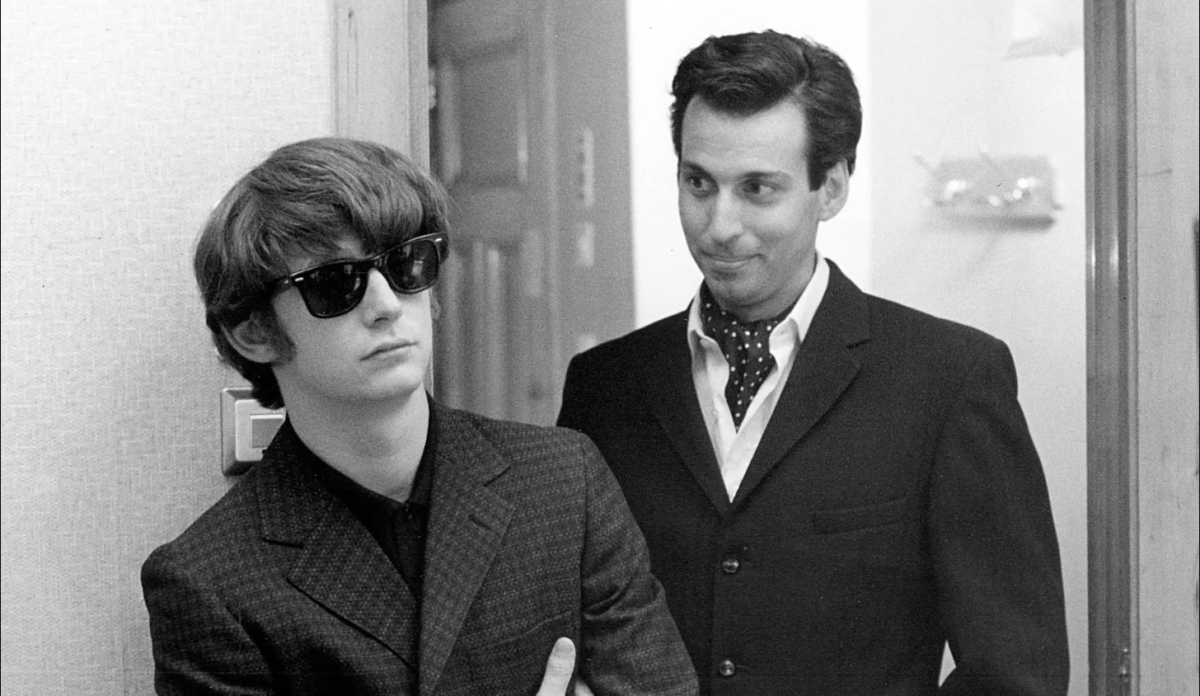
Ian Hart, left, and David Angus in the 1991 film “The Hours and the Times.”
(Academy Museum)
What was inspiring about those films, he adds, was the way they were willing to give pleasure (and represent it on screen) at a time when it was in short supply. Academy Museum series curator KJ Relth-Miller's reassembly of this crackling cinematic wave is a fitting opportunity to revisit those pleasures with the benefit of a few decades of hindsight.
“People were very devastated by the horrors of AIDS,” Rich recalls. “In 1992 we still didn't have a cocktail. I still had no cure. AZT was coming out, but there were big fights about whether to take it or not. People kept dying. So it was not the celebration of the end of an epidemic. “It was a kind of rest stop, a kind of respite for people to count their losses and try to figure out how to create a space of relief and even pleasure in the midst of that pain.”
The filmmakers at New Queer Cinema transformed that pain into brilliant wake-up calls that forced audiences, critics, distributors, and even other artists to pay attention.
“These movies were a rallying cry,” Rich says. “You felt the joy of his arrival into the world. They cleared this space for themselves. They sort of put their own klieg lights on. It was not pleasure without pain. I think that difficult balance was always there.”
You can see that balance in action in the beauty of Ellen Kuras' gorgeous black-and-white cinematography for Tom Kalin's murder-obsessed “Swoon” (1992), a film that Rich says returned the “homosexual to homicide.” “. That ability to turn pain and anguish into moving cinematic images remains a hallmark of this generation of filmmakers.
Does his legacy continue? Rich is quick to highlight Paul B. Preciado’s 2023, Virginia Woolf-influenced “Orlando, My Political Biography” as an absolute masterpiece of trans cinema. (The documentary-essay will arrive on the Criterion Collection's Janus Contemporaries imprint at the end of June.) “We need a lot more films like this, about topics other than queer or trans life,” he says.
Looking at the current film landscape, you can't be too optimistic. “It amazes me how much the film industry has failed us by not making films about the horrors of the modern world,” Rich says. “He's just turned his back and created entertainment.”
Therein lies the still-thorny promise of projects like the rising Beatles period piece “The Hours and Times” and the British-punk drama “Young Soul Rebels,” both of which can be seen as part of the Academy Museum series .
“These films are both a kind of monument to a period and a reinvention of a medium,” Rich says. “I think that's why they last. No one has really surpassed them yet. They are still raw. And there is still a place for them.”

